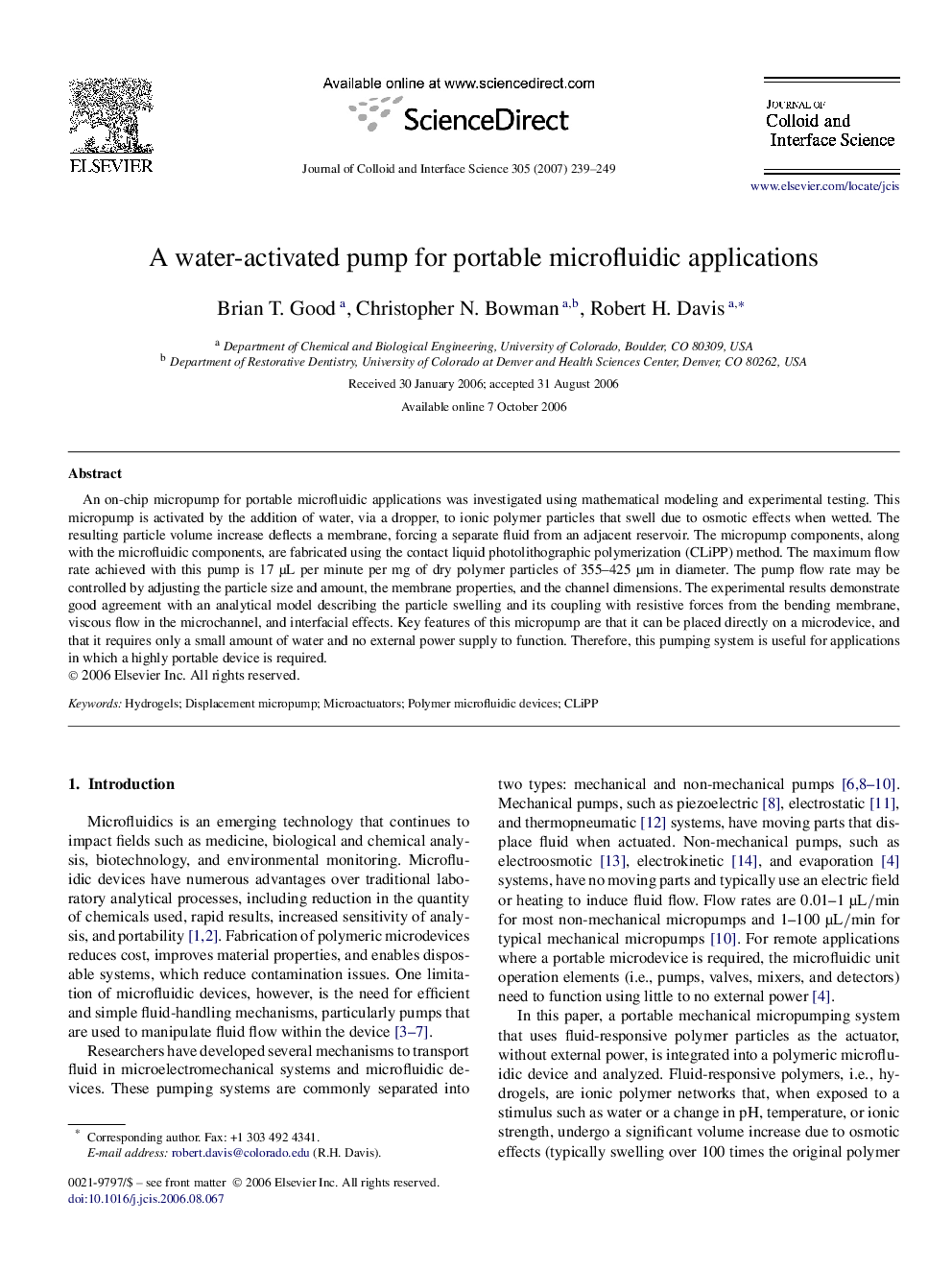| Article ID | Journal | Published Year | Pages | File Type |
|---|---|---|---|---|
| 612397 | Journal of Colloid and Interface Science | 2007 | 11 Pages |
An on-chip micropump for portable microfluidic applications was investigated using mathematical modeling and experimental testing. This micropump is activated by the addition of water, via a dropper, to ionic polymer particles that swell due to osmotic effects when wetted. The resulting particle volume increase deflects a membrane, forcing a separate fluid from an adjacent reservoir. The micropump components, along with the microfluidic components, are fabricated using the contact liquid photolithographic polymerization (CLiPP) method. The maximum flow rate achieved with this pump is 17 μL per minute per mg of dry polymer particles of 355–425 μm in diameter. The pump flow rate may be controlled by adjusting the particle size and amount, the membrane properties, and the channel dimensions. The experimental results demonstrate good agreement with an analytical model describing the particle swelling and its coupling with resistive forces from the bending membrane, viscous flow in the microchannel, and interfacial effects. Key features of this micropump are that it can be placed directly on a microdevice, and that it requires only a small amount of water and no external power supply to function. Therefore, this pumping system is useful for applications in which a highly portable device is required.
Graphical abstractFluid-responsive polymer particles are used to actuate a microfluidic pumping system. The particles swell when wetted, thereby stretching a flexible membrane and driving fluid from an adjacent reservoir.Figure optionsDownload full-size imageDownload as PowerPoint slide
